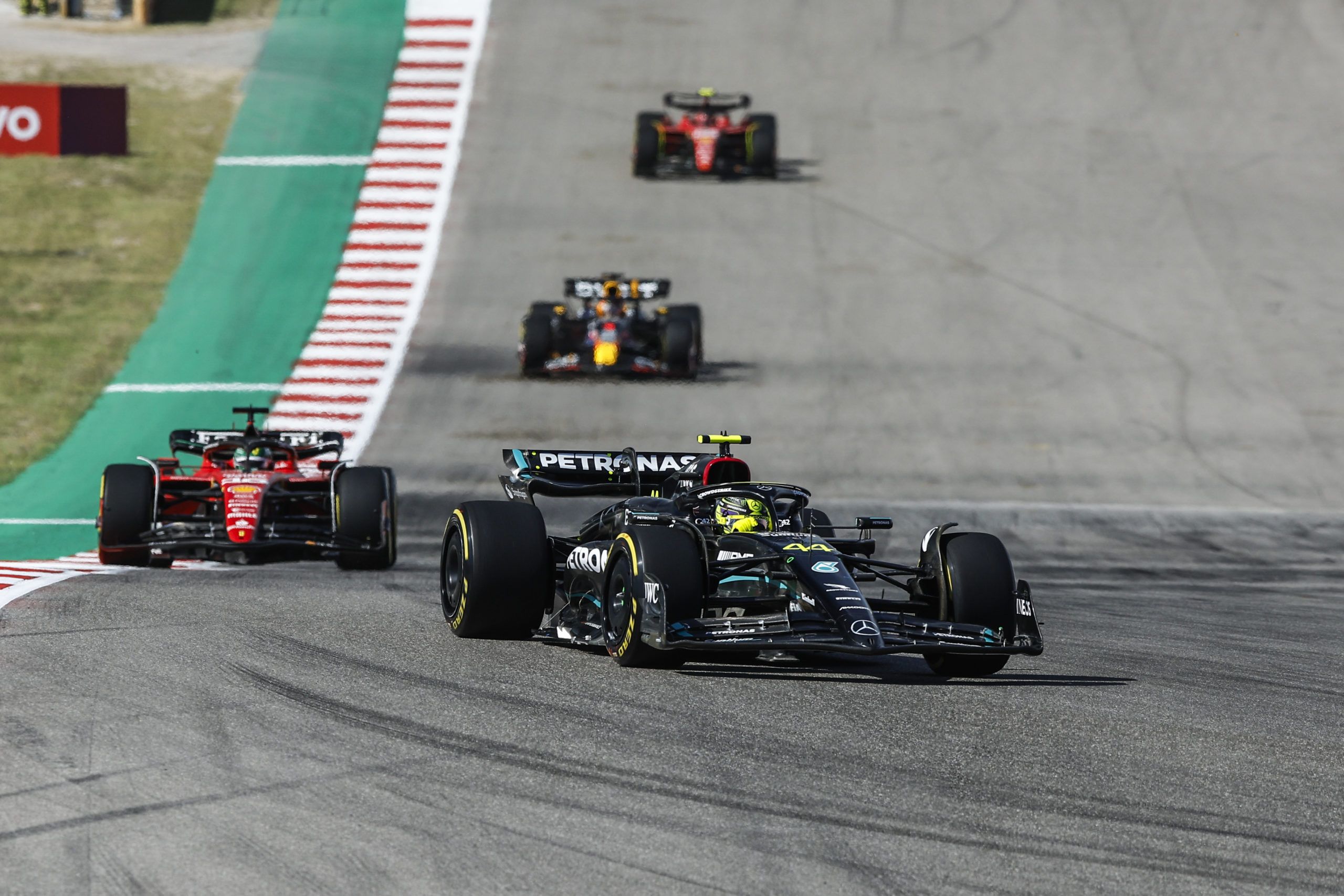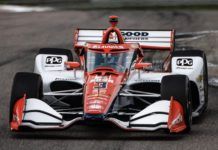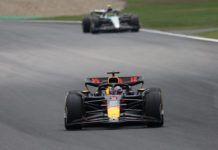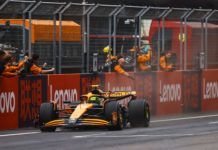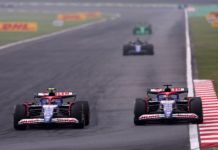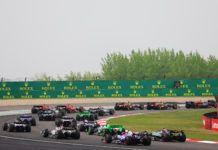Mercedes and Ferrari were left disappointed after an unfortunate disqualification from F1 US GP for Lewis Hamilton and Charles Leclerc.
It was bittersweet at the Mercedes camp and a mood swing from joy to pain within hours. At the end of the F1 US GP, Hamilton was pumped to have finished close to Red Bull’s Max Verstappen in second after the updates brought about to their floor.
Hamilton felt that they had a chance to win if they had got the strategy in place on time. But that joy didn’t last long after the technical delegate referred his and Ferrari’s Leclerc’s car to the FIA stewards who eventually disqualified them both from US GP.
It was due to their cars not fulfilling the underside plank requirement. The wear on it was more than the minimum expected number mostly due to the heavy bumps on at the Circuit of the Americas. Such technical breach results in straight disqualification.
The cars of Verstappen and McLaren’s Lando Norris were also checked but they were found to be within the limits. The disqualification meant Hamilton lost second and Leclerc lost sixth, with Norris ending up second and Ferrari’s Carlos Sainz in third.
Hamilton’s Mercedes teammate George Russell gained two places to fifth. The German camp were naturally disappointed but wanted to focus on the performance gain they made. “We can take a lot of positives from the car performance,” said Toto Wolff. “We hate coming so close to winning and falling short.
“But this is a circuit where only a few races ago we wouldn’t have performed well because of the fast, sweeping corners. The upgrade seems to have made the car happier in those areas and it is working well. Directionally, it’s a very good sign. Turning to the race result and the disqualification, set-up choices on a sprint weekend are always a challenge with just one hour of free practice – and even more so at a bumpy circuit like COTA and running a new package.
“In the end, all of that doesn’t matter; others got it right where we got it wrong and there’s no wiggle room in the rules. We need to take it on the chin, do the learning, and come back stronger next weekend,” summed up Wolff as his Mercedes counterpart Andrew Shovlin further elaborated on the bump and sprint weekend scenario.
“We are of course naturally very disappointed to lose our podium finish,” he said. “Unfortunately, it is one of the pitfalls of the sprint format where we have a solitary hour of running before parc ferme. Without running at a race fuel load in FP1, combined with a circuit as bumpy as this and the parts of the track where the drivers have to put the car during the Grand Prix, have contributed to the higher than expected wear levels.
“We will go away and learn from this but also take the positives from our experience as a whole.” Hamilton had mixed feeling after the race where he felt he could have won but took the disqualification well enough as he wanted to focus on the progress made.
“We had good pace and I was feeling great in the car,” said Hamilton. “It was tough racing those around me as they were so quick, but we can be happy with many things. I feel positive as we’re moving forward, even if reflecting on it we could have possibly won. It is of course disappointing to be disqualified post-race but that doesn’t take away from the progress we’ve made this weekend.”
Much like the Mercedes camp, Ferrari too mostly put the miss on the sprint weekend situation. Sporting Director Diego Ioverno noted that they had raised the ride height in FP1 and felt it was enough but eventually it wasn’t where they missed by only few tenths.
“As you may know, it has not been a conventional end of the race for us,” he said in a video. “The decision from stewards was to disqualify for a technical infringement on both Charles and Lewis. It happened that the technical regulation clearly states that at the end of the race, there are some measurements that have to be respected for the bottom parts of the car that are used to protect the car from grabbing of the asphalt.
“At the end of the race measurement, our car was below the minimum threshold for few tenths but enough to bring the stewards to consider illegal our position. The code doesn’t allow anything else that disqualification for the case. The sprint weekend is very peculiar. You have very little time to prepare the car. Basically only one session FP1 and then you go in parc ferme, it means that from that moment onward, you cannot touch the car any longer.
“On top of this Austin is a super nice track but is extremely bumpy. Bumpiness is a difficult topic for drivers and cars. In the past, more or less everyone failed their suspension or chassis. We knew it would have been tricky and this is the reason why we lifted the car throughout FP1 and from our consideration it should have been OK.
“As a matter of fact it turned out we were anyhow too marginal and also because of the wind that turned direction and had a stronger intensity than forecast, this brought our car to not be legal in the end. There is not a lot to say or at this moment we could have done. With hindsight, rewinding the weekend, we may have lifted even more the car, but would have lost performance and we are here to optimise our own performance,” he summed up.
Here’s what the FIA said about the DQ
Here’s how F1 US GP panned out
Here’s link to a F1 Discord channel, join in to interact

